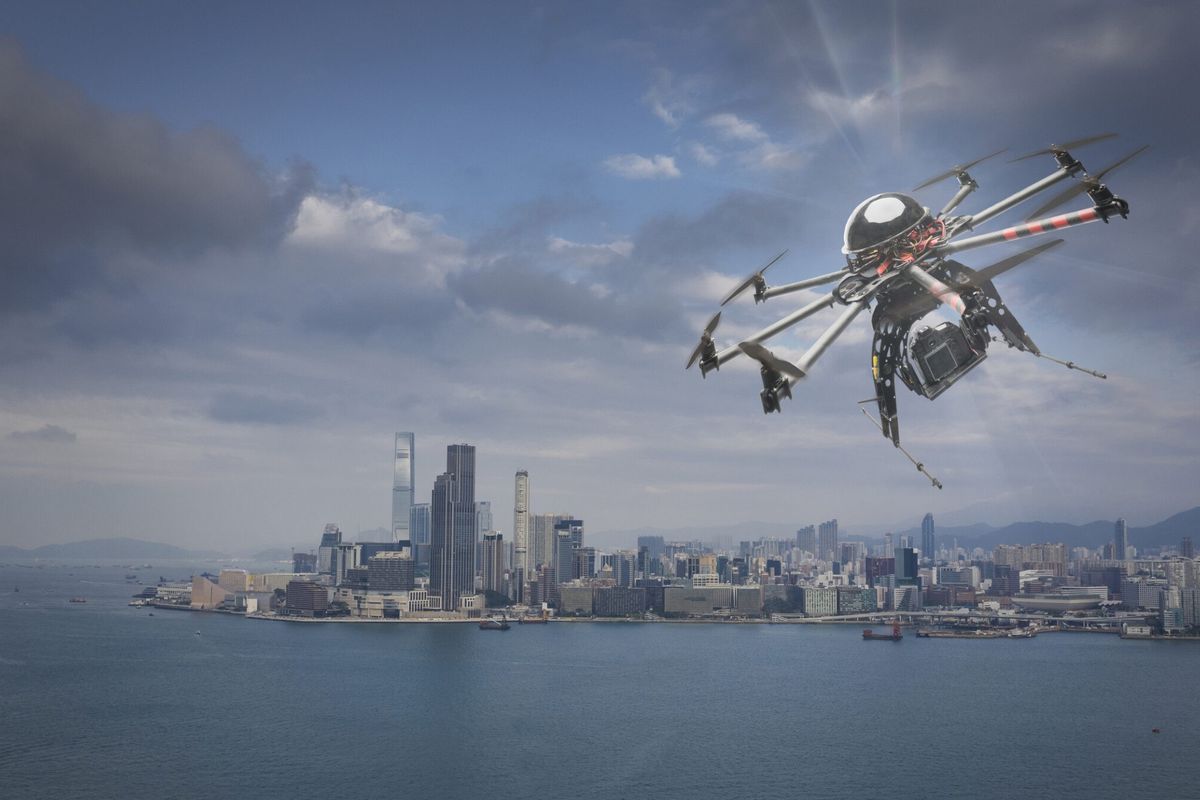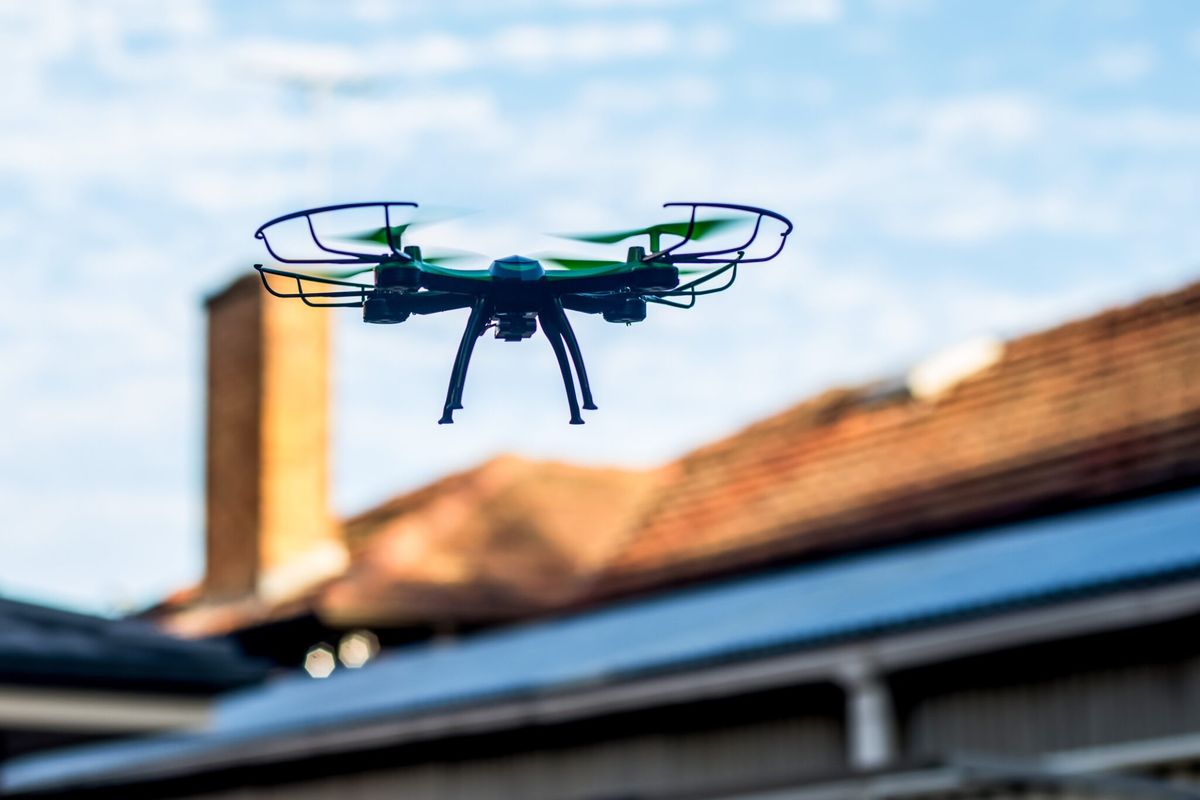“Small, smart, cheap, and many” is the way Deputy Defense Secretary Kathleen Hicks describes the characteristics of the drones that the Pentagon intends to put in the hands of warfighters in 18-24 months as part its Replicator drone initiative.
“Imagine flocks of ADA2 (all-domain, attritable autonomous) systems, flying at all sorts of altitudes, doing a range of missions, building on what we've seen in Ukraine,” Hicks said. The experience of the Ukraine conflict has been instructive, said Hicks. “We've seen in Ukraine what low-cost, attritable systems can do.”
So what this mean for the future of DoD warfare? The answer is in Hicks’ description of Replicator: “attritable, autonomous systems in all domains.”
THE CONTEXT
- The Replicator program includes unmanned aircraft but it also includes a force of other “use cases” including solar-powered pods, self-navigating marine platforms; fleets of ground-based ADA2 systems providing logistics support, reconnaissance insights, security for DoD infrastructure; and orbiting ADA2 devices whose sheer numbers offer insurance against an adversary’s efforts to degrade or destroy space-based constellations.
- In its 2022 annual report to Congress, the DoD noted the explicit plans that the China’s People’s Liberation Army (PLA) has for AI-enabled weapons systems, including “next-generation…attrition warfare by intelligent swarms…and unmanned aerial, surface, and underwater vehicles.”
- That strategic goal on which China embarked years ago, Hicks noted, was sufficient to trigger Pentagon leadership’s determination to counter the “sheer mass” of China’s military with “mass of our own.”
Former NATO Supreme Allied Commander and Cipher Brief Expert Admiral James Stavridis (Ret.), wrote in Bloomberg that he can picture clouds of small, unmanned vehicles conducting reconnaissance missions followed up by heftier companion drones to deliver explosives on target. Complementing those devices would be “drones carrying out cyberattacks to blind the enemy, effectively ‘cloaking’ our own forces while destroying an enemy’s fighting ability.” In Stavridis’ view, the reality of that scenario “is closer than most realize. Replicator is not science fiction at all.”
EXPERT INSIGHTS
The Cipher Brief tapped a range of experts familiar with the Defense Department’s drone aspirations to weigh in on what this could mean for the future of warfare. Interviews have been edited for length and clarity.
Zachary Kallenborn, Policy Fellow at the Schar School of Policy and Government, George Mason University
Zachary Kallenborn is a Policy Fellow at the Schar School of Policy and Government, a Research Affiliate with the Unconventional Weapons and Technology Division of the National Consortium for the Study of Terrorism and Responses to Terrorism (START), an officially proclaimed U.S. Army “Mad Scientist,” and a Senior Consultant at ABS Group.
Jim Mitre, Director, International Security and Defense Policy Program, RAND Corporation
Jim Mitre is the director of the International Security and Defense Policy Program, and a senior international/defense researcher at the RAND Corporation. Mitre previously served as a senior advisor to the Deputy Secretary of Defense charged with establishing the Office of the Chief Digital and Artificial Intelligence Officer.
Eric Heginbotham, Principal Research Scientist at MIT’s Center for International Studies
Eric Heginbotham is a principal research scientist at MIT’s Center for International Studies and a specialist in Asian security issues. Before joining MIT, he was a senior political scientist at the RAND Corporation, where he led research projects on China, Japan, and regional security issues and regularly briefed senior military, intelligence, and political leaders.
Shaan Shaikh, Associate Director and Associate Fellow with the Missile Defense Project at the Center for Strategic and International Studies(CSIS)
Shaan Shaikh, an associate director and associate fellow with the Missile Defense Project at the Center for Strategic and International Studies (CSIS), where he focuses on missile proliferation, unmanned aerial systems, air defense, and non-state actors. He is also deputy editor of the CSIS website Missile Threat, an online clearinghouse for information and analysis on missile and missile defense systems.
The Cipher Brief: Given the DoD's 18 to 24-month timeframe, how do you think the Pentagon will ramp up to such an ambitious target? What about the “tail” of this undertaking, i.e., the underlying network infrastructure, AI software, and operator training and skills to make the concept work?
Kallenborn: Hitting the 18 to 24-month goal is likely to be a challenge, mostly because of bureaucracy. As we saw in Ukraine, clearly the technology is there. The problem is that Hicks also noted several requirements that the drones need to meet, such as being more effective, hardening against electronic attack, using AI, etc. Adding those requirements will make the timeline harder. Especially if they include autonomous targeting, which would require additional review under the revised 3000.09 policy. That’d push the timeline out further.
DoD will also face force integration challenges – what role will these drones play? How will folks be trained on them? How will the systems be tested? Will operators trust the system? Some of that can probably happen concurrently once they have firmed requirements. But others will be tough – can’t start training folks on a system that doesn’t exist.
Mitre: The most ambitious aspect of this initiative is not the development of thousands of autonomous systems but having these systems fielded in an operationally relevant context in the Indopacific. There are hard technical problems to address in the Indopacific environment, such as how these systems can remain low-cost if they operate over long distances, in high sea-state conditions, and against layered Chinese defenses. Moreover, an even harder problem is determining how operators will use them and how they integrate into a larger force that seeks to deny Chinese military aggression.
Heginbotham: One of the problems here is that this is an “initiative” not a program, and the parameters or boundaries of the initiative have not been specifically designed. In order to meet the definition of “cheap,” “attritable,” or deployable in “thousands,” the new crop of systems will, of necessity, be small systems with modest flight ranges. Small size would solve some problems, such as the need for full-fledged runways for launch and recover, but it will create others. Most importantly, is the launch location, manning, and unit infrastructure required for these elements, and how they will get to where they need to be.
The closer the drone unit is located from relevant operational areas, the better. Drone units might be made mobile or deployable, so that they might be deployed to Taiwan or to areas close by after a conflict starts (on the assumption that policy changes), but the practicalities of deploying such elements during crisis or wartime would have to be considered.
All significant military change requires iterated adjustments in structures and operational practice. But the idea that ready solutions to U.S. operational problems are simply waiting on store shelves, and that purchasing new and cheaper drones, based on commercially available models, will itself solve problems would also be a misconception.
Shaikh: The U.S. Department of Defense plans to leverage past investments in small UAS and autonomy to advance the Replicator initiative. There is no way the DoD could push an effort this large, this fast without doing so.
While Hicks’ speech announcing the Replicator initiative was titled “The Urgency to Innovate,” it could alternatively be titled “The Urgency to Integrate.” The DoD has already made tremendous progress in developing small UAS and autonomous capabilities across the Services. This new initiative presents an opportunity to integrate these efforts under a single roof, to boost U.S. military capabilities and develop a credible counter to China’s advantage in mass “more ships, more missiles, and more people.”
Still, there are a lot of unanswered questions. Will the DoD push a high-concurrency acquisition plan to achieve such quick timelines, and if so, how will they avoid setbacks that have plagued similar plans? Will DoD own the networks that connect these autonomous platforms, or will a defense contractor run them? What’s the targeted price tag of these “attritable” drones and how much will DoD subsidize or otherwise incentivize production to get the ball rolling? If the Replicator’s timeline is accurate, we should get answers to these questions soon.
The Cipher Brief: Hicks stressed that “Replicator” will concentrate on drone production “in all domains.” Presumably, this refers to marine and terrestrial systems as well as aerial platforms. What types of capabilities do you think the DoD will pursue in all three dimensions?
Kallenborn: If they’re looking at cheap, attritable aerial drones, then it seems reasonable they’d look for cheap, attritable ground, and marine drones too. We saw in Ukraine that cheap, kamikaze unmanned surface vehicles can cause significant harm, because they hit enemy ships right at the water line. As Marcel Plichta and I wrote about for CSIS, you can do the same with ground vehicles too. Create cheap, mobile landmines that can threaten a larger area than a single mine, and adapt to adversary behaviors. The value is essentially the same as kamikaze aerial drones. Cheap, attritable mass that can be thrown against a target to overwhelm it, and force defenses to reposition.
Mitre: In a China conflict scenario, autonomous systems show the most utility in air and naval domains. RAND research suggests that runway independent autonomous aerial systems have potential to significantly improve sensing and targeting of Chinese forces, especially if these attritable systems can be reseeded. For strike operations, as we’ve seen in Ukraine recently, naval systems can carry enough explosives to significantly damage large surface combatants. Moreover, both air and naval systems show promise as decoys to confuse the Chinese military’s targeting of U.S. and allied forces.
Cipher Brief Subscriber+Members enjoy unlimited access to Cipher Brief content, including analysis with experts, private virtual briefings with experts, the M-F Open Source Report and the weekly Dead Drop - an insider look at the latest gossip in the national security space. It pays to be a Subscriber+Member.
Heginbotham: Different parts of the U.S. military have been working on new types of unmanned or autonomous systems for many years, and it was inevitable that an initiative coming out of the Secretary of Defense’s office would include multi-domain elements – particularly air and maritime systems.
Among the systems that officials have said might be folded into the initiative is the Large Diameter Unmanned Undersea Vehicle (LDUUV) program. Again, however, the inclusion of some of these existing programs raises questions about focus. The LDUUV may weigh roughly 20,000 pounds and is only cheap and attritable relative to large, manned platforms.
One way of viewing the initiative may be that it will boost a number of existing unmanned programs while launching an ambitious new effort to birth a cheaper and networked airborne drone concept.
Regardless of whether the new drones operate in the air or maritime domains, they will address a few functions, and if the object is to control costs, then each type system will likely focus on one or two of these. The most natural function for unmanned or autonomous platforms will be ISR – intelligence, surveillance, and reconnaissance – though they might also serve as decoys, minelaying (or clearing) systems, or even local strike.
Shaikh: Small aerial drones are a known quantity today. They have proven cheap to produce, easy to deploy, and hard to detect or shoot down without a robust air defense network. We have seen their extensive use around the world, including in the Russia-Ukraine war, Nagorno-Karabakh conflict, and by Iranian proxies, among many others. It’s likely that the Replicator initiative will advance DoD attritable drone programs already underway or speed their transition from prototype to production.
Small sea-based drones are less common but have also been used operationally. We’ve seen, for example, Ukraine deploy sea-based drones to strike Russian warships. In Yemen, the Houthis have launched simple but effective bomb-laden drone boats to target ships operating along Yemen’s coast. The U.S. military has used maritime drones to conduct ISR missions in the Middle East, although Iranian sailors managed to capture these drones at least once. There are perhaps fewer examples of land- and space-based drones, although Hicks’ vision of “constellations of ADA2 systems on orbit, flung into space scores at a time, numbering so many that it becomes impossible to eliminate or degrade them all” purposely recalls today’s Starlink satellites.
The Cipher Brief: One challenge already directed at “Replicator” concerns the overvaluing of drone combat capabilities in a large-scale conflict in the Pacific where sheer distance is its own complication. Also, are AI-enabled drone guidance and control systems developed to a degree that ensures effectiveness? Has the Ukraine conflict provided some answers for U.S. military planners?
Kallenborn: The question of overvaluing will really depend on how genuinely affordable the systems are. Let’s say the price comes out to $20,000, i.e., 2,000 of those drones would cost $40 million. For the Pentagon’s budget, that’s a rounding error. That said, I think there’s a fair argument that the attention paid is overvalued, and that has truth. Those cheap drones definitely mattered in Ukraine, but the other big lesson from Ukraine is the importance of production capacity and sustainment. Spending time and effort on building the defense industrial base to sustain long-term war efforts (especially increasing ship-building capacity) is probably more important.
Ukraine has taught us states are fairly hesitant to use autonomous weapons capabilities, weapons that select and engage targets without human control. Ukraine has acknowledged they can field that capability but chose not to. I suspect part of this is because they do not genuinely trust the technology, given the brittleness and weakness of machine vision in that use case. But the United States and others are learning the value of that type of autonomy, as one of the big threats to drones has been electronic warfare. If drones do not need human control, then electronic warfare is far less of a problem.
The United States and others are learning that autonomy and AI can be really useful for augmenting human-controlled systems. Machine vision might make too many mistakes to rely on alone, but it can help cue humans to relevant features that might otherwise be missed.
Mitre: If it wasn’t abundantly clear already, the Ukraine war highlights that mass still matters. It’s imperative for the Defense Department to meaningfully explore the opportunities provided by autonomous systems to improve the correlation of forces in the Indo-Pacific. There will certainly be resource tradeoffs between investing in autonomous systems vs. traditional platforms. Striking the right balance between them will be critical. But that’s not a choice currently confronting the Department. Replicator aims to provide such a choice for future force planners.
Heginbotham: Given the distances involved in the Indo-Pacific area of responsibility, there will be a temptation to extend the range of whatever drones are considered. If this happens and systems become larger, there may be a corresponding temptation to add mission capabilities to each system. In other words, if the Pentagon wants to accomplish the goal of deploying thousands of truly inexpensive systems, it will have to resist the urge towards mission or capabilities creep, and the scale of the Pacific theater will exacerbate the dilemma and problems.
The Ukraine war has highlighted the extent to which very cheap unmanned or autonomous systems can threaten expensive platforms as well as the extent to which drones can assist in providing intelligence down to the smallest tactical elements. In some cases, those small units control their own assets. On the other hand, the war has also shown that electromagnetic countermeasures can, under the right circumstances, neutralize the effectiveness of those systems. The challenge, then, is to strike a balance between affordability and the pursuit of perfection and, perhaps, to design a range of systems based on different assumptions and principles, such that a particular combination of countermeasures may not neutralize the entire complex of new systems.
Shaikh: We should not assume that small drones are limited to short ranges. Iran’s infamous Shahed-136, for example, has a reported range of 1,500 km. It’s loud and slow, but cheap and effective for certain missions. Likewise, among the various small drones the U.S. has transferred to Ukraine, some models feature extended loitering capabilities and ranges of several hundred kilometers.
If the Replicator is indeed short ranged, it can still support strikes on Chinese forces engaged in an assault on Taiwan or another U.S. partner. The Replicator’s limited range may in fact help reaffirm the U.S. mission in the Indo-Pacific to defend its allies and partners, and not to attack the Chinese homeland. This benefit comes at the cost of needing to deploy the Replicators near hot spots before or during active conflict. Doing so before conflict will be difficult politically; doing so during conflict will be difficult logistically. But both are possible.
There is no easy answer to concerns over drone autonomy. It is hard to imagine U.S. military personnel being “in the loop” to the same degree with large, autonomous drone swarms operating simultaneously in multiple domains, as compared to flying individual MQ-9 Reapers. Oversight for autonomous weapons systems is critical, but the DoD will need to accept some new operational risk to deploy them.
The Cipher Brief's Ken Hughes authored this report.
Read more national security news, insights, perspective and analysis in The Cipher Brief because National Security is Everyone’s Business.














